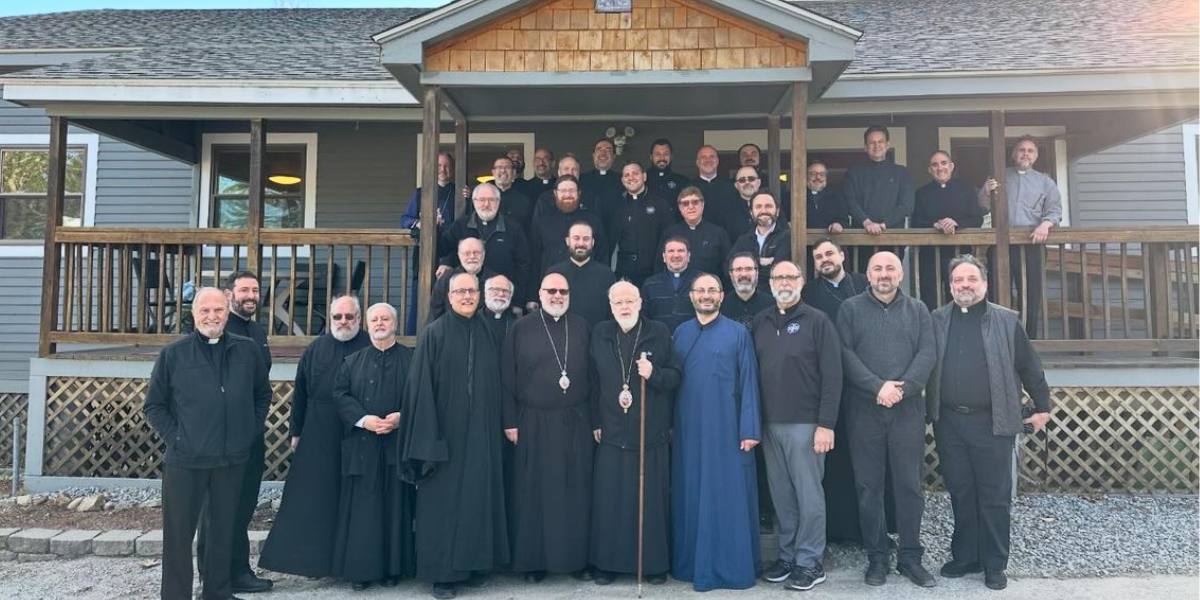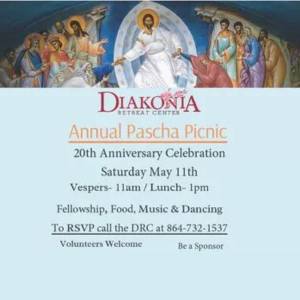Editorial: “More Spoons, Fewer Spills”
Holy Tradition is one thing; long-held Church customs are another. The former is divine in origin, Apostolic and unchangeable; the latter varies throughout time and place in response to varying human considerations. Those who fail to distinguish Holy Tradition from temporal traditions introduce confusion into the Faith, inviting rancor and even schism.
For example, clergy today employ an applicator for the Mystery of Holy Unction: a stick or brush or cotton swabs. Yet the Apostolic injunction for the anointing of the sick (James 5:14) uses the Greek verb ἀλείφω, meaning “to rub or smear” oil on the body, as ancient athletes used to do after a workout. This was done, not with brushes or swabs, but with bare hands. (Just as clergy apply the Oil of Gladness at Holy Baptism even today.)
Over time—and no doubt for practical considerations—clergy began to use applicators for the Agion Euchelaion instead of their fingers. This change was an innovation, but nothing spiritual or sacramental was at stake. The same grace of the Holy Spirit was given through Holy Unction, regardless of the instrument used to anoint. And so even today, we experience fully the power and efficacy of this Great and Holy Mystery of healing.
Some clergy employ a single applicator for all parishioners, while others use disposable swabs, one for each person. This variation in practice has existed for many years. No one ever deemed it a cause for division in the Church or grounds for accusations of heresy. No one ever suggested that individual swabs either impugned the sacredness of the Mystery or implied that Holy Oil could convey corruption. Regardless of the applicator used, the Apostolic Tradition of anointing the sick was maintained unchanged, while being administered in a variety of ways.
So it has been also for the Mystery of Holy Communion. The Lord’s command to receive His Body and Blood has been followed unchangingly in the Orthodox Church for 2000 years. Even so, the method of distributing the Holy Gifts has changed several times. At first, the Holy Body of Christ was placed directly into the hands of the communicant, as the Lord most certainly did for His disciples at the Mystical Supper. Thereafter, a common cup was shared by sipping from the same chalice (much as a bride and groom do in the Sacrament of Holy Matrimony even today).
We learn from Saint Cyril of Jerusalem (Mystagogical Catechesis, 5.21-22) that these practices were still in place in his time. Only much later did the practice develop of using tongs or spoons. From other sources we know that the Eucharist was sent home with laypeople so that they might commune themselves daily or provide the Gifts to others unable to attend the Liturgy. (Cf. Tertullian, Second Letter to His Wife, 5; Pope Damasus, Inscription for Saint Tarcisius; Eusebius, Ecclesiastical History, Book 6, chapter 44.) A vestige of this is the practice of retaining antidoron for the week and consuming a bit every day.
The Church has since ceased all these earlier methods for distributing the Holy Gifts for practical and pastoral reasons. Nevertheless, the sacred deposit of the Faith remains unchanged, as day by day we celebrate the Eucharist and receive the Lord’s Body and Blood.
Consider the possibility of multiple spoons for the Eucharist. Would these not be preferable to a common spoon, with the “drop” technique of distribution that some now favor? First, many of our communicants are senior citizens. For sixty years or more, they have closed their mouths on the spoon, just as they were taught in childhood. Try as they might, simple muscle memory will take over. They will close their mouths on the spoon despite their best intentions. This mishap will make the act of communing a cause of embarrassment for them, and not the joy it should be. And what of very young children, whose impulse will always be to close their mouths on the spoon? Moreover, their mouths are often too small for the priest to drop in the Holy Gifts without spillage.
Second, some parishioners cannot open their mouths wide for the drop technique due to arthritis or TMJ disorders; others cannot tip back their heads adequately due to balance problems. In such cases, the Law of Gravity applies to the Holy Gifts just like everything else in the world. The Gifts will fall—hopefully onto the napkin, but possibly onto the floor. Again, this mishap is a cause for embarrassment and even shame for our elderly.
Why not switch to multiple spoons, which parishioners can securely close their mouths on? Some say that this practice would impugn the dignity of the Holy Gifts. But we contend that it would safeguard the Gifts even better. When the laypeople have no fears about closing their mouths on the spoon, they will receive the Gifts with a confidence that makes spillage less likely. More spoons will make for fewer spills. We should all be in favor of that. Remember: the very reason the Church moved to distributing Communion with a spoon was for the practical purpose of preventing spillage.
Some will object that multiple spoons cater to weakness of belief: if people have sufficient faith, Holy Communion cannot possibly harm them. But then what of our parishioners whose faith is weak in this regard? They may fear contagion, not from the Holy Gifts, but from some residue left on the spoon by a parishioner before them. Must they be excluded ever hereafter from the Holy Chalice for their doubts? When the father of the demoniac boy came to Christ, he cried out: “I believe; help my unbelief!” (Mark 9:24) And the Lord most certainly helped him in his unbelief. Must we now make fear of contagion the ultimate criterion for judging whether a parishioner is worthy of the medicine of immortality? Or does a quaver of doubt consign him forever to excommunication? Where is the fatherly kindness in any of this? Is not the whole mystery of the Incarnation God’s way of condescending to humanity’s weakness of faith?
If our salvation depends on our own strength of faith rather than the unqualified mercy of God, which of us should ever dare commune again? Remember that the great and holy Apostle Peter had faith enough to step out onto the surface of the sea to join Christ, but thereafter his faith wavered and he sank into the waves (Matthew 14:22-33). And what about our people, who might come forward with the fear of God, faith, and love; but then with the precious Gifts already in their throats, hearing their neighbor cough or sneeze, lose courage? Will one’s faith protect him from contagion in that case?
We note also that St. Nikodemos of the Holy Mountain, in his commentary on the 28th Canon of the Quinisext Council, allowed for innovative methods for distributing Communion. These methods were designed to forestall the spread of contagion. In other words, his approach in time of plague is NOT to say, “Your faith will keep you from getting sick in the act of distributing the Gifts.” Rather, this holy Father advises practical and hygienic measures to achieve a spiritual end.
Some also claim that multiple spoons will cause a rift in the worldwide body of the Orthodox Church. This objection is sheer casuistry: there are a myriad of ways in which liturgical practices differ across the various autocephalous churches of Orthodoxy. We use different kinds of liturgical chant, color schemes for vestments forms of the Burial service, and so on. The Orthodox Church of Finland even celebrates Pascha on a different date from the rest of the Orthodox world! None of these variations in liturgical practice disrupts the unity of the Faith. Holy Tradition remains unchanged, even as our customs for practicing it vary. A modest Q-tip or extra spoon cannot disrupt the unity of the Faith that is truly One, Holy, Catholic, and Apostolic.











